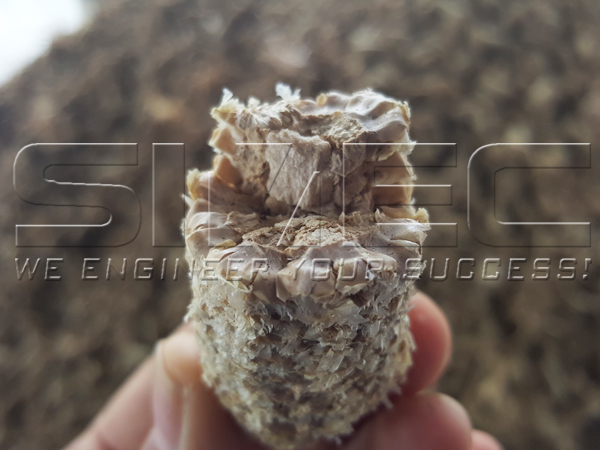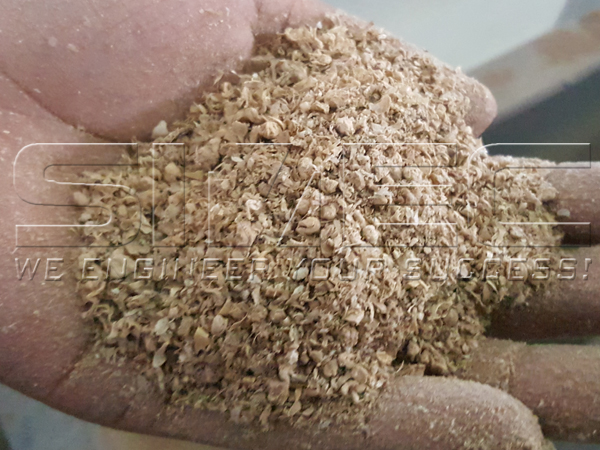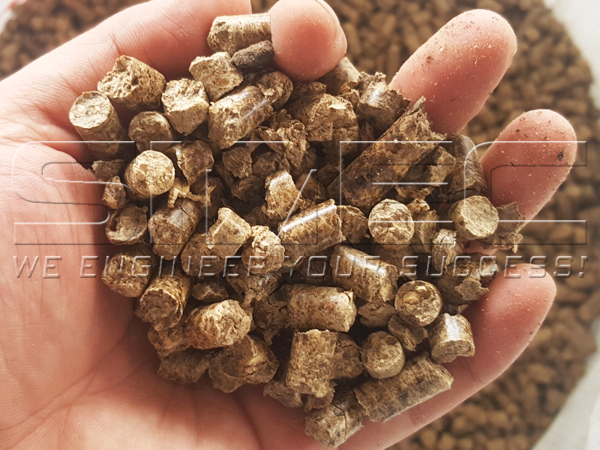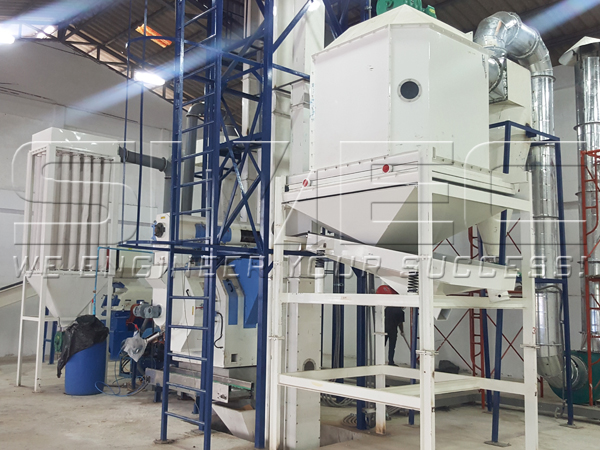FROM CORN COB TO PELLET BIOFUEL
Corn cobs are by-products from the cultivation of corn. Corn cob accounts for about 20%-30% of the corn. The cobs are variously used in metal smelting industry, feed industry, animal bedding, chemical industry and so on.

Corn Cob

Crushed Corn Cobs
The cobs have following features:
1. Friction: the corn cob powder can be used to scrub, polish, and dry the metal, plastic and glass products;
2. Adsorbability: cob powder can absorb the water quadrupled its own weight. It can be used as the raw material of activated carbon with good developing prospect.
3. Nontoxicity: the cobs are used as a carrier for vitamins in the feed industry and seasoning;
4. Chemical stability: the cobs are very good carrier for medical and chemical industry;
5. Biodegradability: the cob will not cause any pollution to the environment.
But in some areas of the world, the cobs are abandoned as wastes and not utilized. As the rapidly increasing demand of the biomass energy, corn cob is thought to be one kind of available raw materials to make pellets. The corn cobs have a calorific value of 4451 kcal/kg, which is certainly potential for a source of energy.
Pelleting corn cobs to be pellets is the best choice for the energy source. That increases the energy density of the fuel and minimizes transportation cost. The cob pellets can be used to fuel stoves in the cultivated area or for industrial heating and electricity generation, and have the potential for exporting abroad. As an environmentally friendly fuel, corn cob pellets are easily stored and used; as carbon neutral fuel the pellets will reduce the impact of climate change due to greenhouse gases and push low-carbon economy.
Please do not hesitate to contact us by sending email to info@simecpllet.com to enquire for the complete corn cob pellet line.

Corn Cob

Crushed Corn Cobs
The cobs have following features:
1. Friction: the corn cob powder can be used to scrub, polish, and dry the metal, plastic and glass products;
2. Adsorbability: cob powder can absorb the water quadrupled its own weight. It can be used as the raw material of activated carbon with good developing prospect.
3. Nontoxicity: the cobs are used as a carrier for vitamins in the feed industry and seasoning;
4. Chemical stability: the cobs are very good carrier for medical and chemical industry;
5. Biodegradability: the cob will not cause any pollution to the environment.
But in some areas of the world, the cobs are abandoned as wastes and not utilized. As the rapidly increasing demand of the biomass energy, corn cob is thought to be one kind of available raw materials to make pellets. The corn cobs have a calorific value of 4451 kcal/kg, which is certainly potential for a source of energy.
Pelleting corn cobs to be pellets is the best choice for the energy source. That increases the energy density of the fuel and minimizes transportation cost. The cob pellets can be used to fuel stoves in the cultivated area or for industrial heating and electricity generation, and have the potential for exporting abroad. As an environmentally friendly fuel, corn cob pellets are easily stored and used; as carbon neutral fuel the pellets will reduce the impact of climate change due to greenhouse gases and push low-carbon economy.
Corn cob pellet production is not complicated. Most of the cobs separated from the seeds and peel, are dry enough. The production process is corn cob Crushing → Pelleting → Pellet Cooling & Sifting → Packing. SIMEC has rich experience in pelleting the agriculture wastes. The corn cob pellet project in North Thailand has recently started operation in the end of July. The project includes one set of MFSP-I hammer mill, one set of SPM520 pellet mill, one set of SKLN14x14 pellet cooler&sifter, and other types of equipment such as bucket elevators and belt conveyors. Please visit the website
http://www.simecpellet.com/project/2_tph_corn_cob_pellet_project_in_thailand.html
to get more information about this project.
http://www.simecpellet.com/project/2_tph_corn_cob_pellet_project_in_thailand.html
to get more information about this project.
Please do not hesitate to contact us by sending email to info@simecpllet.com to enquire for the complete corn cob pellet line.

